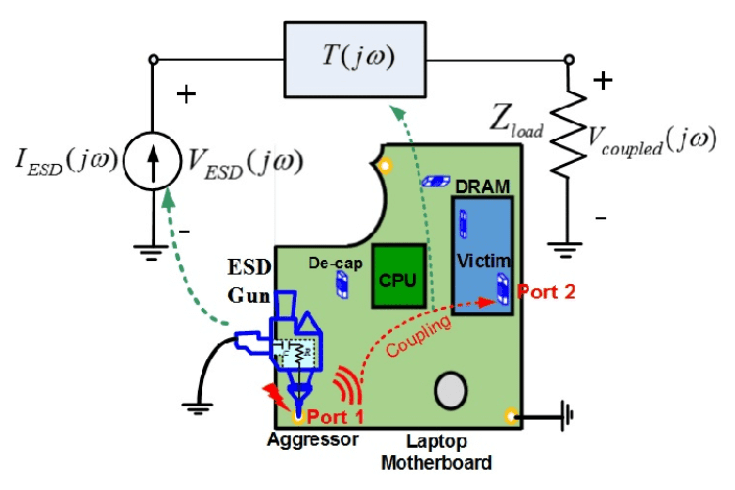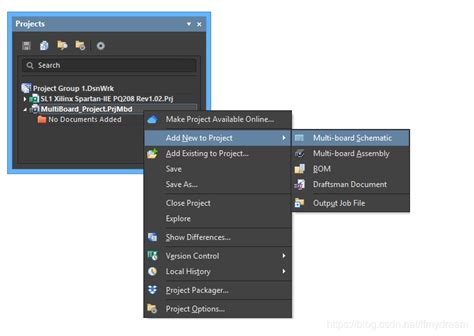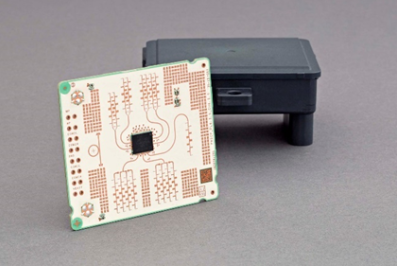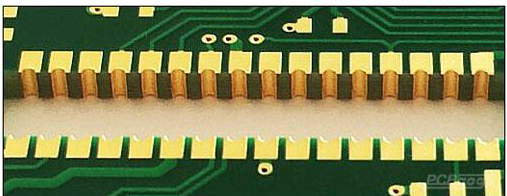Unveiling the Best PCB Fabrication: Your Ultimate Guide!
Key Takeaways
When diving into the world of PCB fabrication, it’s essential to grasp the key aspects that will influence your project’s success. Understanding the overall landscape of pcb manufacturing is your first step; it involves not just the technicalities of production but also navigating through pcb manufacturing companies to find the right match for your needs. You should consider factors such as pcb manufacturing cost, which can vary significantly based on complexity and volume, along with lead times and available technologies. Establishing a relationship with a reliable pcb manufacturing business can streamline your process, ensuring that you receive top-quality service coupled with competitive pricing. Always remember to evaluate quality against cost, so you make informed decisions that align with your project’s budget and requirements. By keeping these points in mind, you’ll be better equipped to make decisions that will advance your electronic projects efficiently and successfully.
Understanding PCB Fabrication: A Comprehensive Overview
When delving into PCB manufacturing, it’s essential to grasp the intricate processes involved to create a reliable circuit board for your electronic projects. The term “PCB” stands for Printed Circuit Board, and the fabrication process encompasses various stages, from designing the layout to assembling the components. Understanding these stages will help you better navigate through your requirements when assessing different pcb manufacturing companies.
Typically, pcb manufacturing involves creating layers of conductive material, insulating layers, and etching patterns that allow electrical signals to pass. It’s crucial to strike a balance between quality and cost during this process; hence, knowing the pcb manufacturing cost is vital for budgeting in any ongoing or upcoming projects. Many pcb manufacturing businesses today offer varying levels of precision and service—some might focus on rapid prototyping, while others excel in large-volume production.
As you explore options, consider manufacturers that prioritize advanced technology and quality control measures to ensure you receive a product that meets your specifications. Reliable companies not only give detailed quotations but also have robust customer support systems in place. For a comprehensive view of different services available in this field, you may want to check out resources like Andwin PCB which can provide valuable insights into selecting reputable suppliers for your needs. Understanding these facets of pcb fabrication will empower you to make informed decisions as you embark on your projects.
Top PCB Manufacturers: Comparing Quality and Pricing
When venturing into the world of PCB manufacturing, understanding the landscape of various PCB manufacturing companies is paramount for your electronic projects. The quality of printed circuit boards (PCBs) can significantly affect the overall performance and reliability of your devices. Some top PCB manufacturers are renowned for their superior fabrication techniques, state-of-the-art technology, and excellent customer service. Such companies often strike a balance between reliable quality and competitive pcb manufacturing cost, making them ideal partners for both small-scale enthusiasts and larger businesses.
It’s essential to create a comparison table to evaluate these manufacturers based on key factors such as lead time, minimum order quantity, and specialized capabilities:
| Manufacturer | Lead Time (Days) | Minimum Order Quantity | Specialized Capabilities |
|---|---|---|---|
| Manufacturer A | 5 | 10 pcs | Multilayer boards, quick-turn |
| Manufacturer B | 7 | 25 pcs | High-frequency PCBs |
| Manufacturer C | 14 | 50 pcs | Flexible PCBs |
| Manufacturer D | 3 | No minimum | Custom designs |
When choosing a pcb manufacturing business, consider your project requirements carefully. Are you focusing on speed? Or is superior quality your priority? Using this comparison as a guide will help you find a suitable partner that can meet your specific needs regarding pricing, quality control, and other essential factors in PCB fabrication.
Remember that while it’s tempting to select solely based on the lowest pcb manufacturing cost, investing in quality can lead to long-term benefits through enhanced performance and reduced failures in your products. Thus, carefully balancing price with quality assurance from reliable manufacturers is vital for achieving successful results in your electronic endeavors.
Key Features to Look for in PCB Fabrication Services
When selecting the right PCB fabrication services, there are several key features you should consider to ensure high-quality results for your projects. First and foremost, look for manufacturers that offer a range of PCB manufacturing capabilities, including various materials, layer counts, and sizes. This flexibility allows you to choose the ideal specifications tailored to your unique needs.
Additionally, pay attention to the pcb manufacturing cost and how it aligns with your budget without compromising quality. Companies that provide transparent pricing structures and detailed quotes can help you make informed decisions. You’ll also want to evaluate the technical expertise of the pcb manufacturing companies you are considering, as this can significantly impact the reliability and performance of your end product.
Moreover, consider turnaround times and customer service responsiveness; timely communication is essential in a fast-paced pcb manufacturing business environment. Finally, don’t hesitate to ask for samples or references from past projects—this not only showcases their capability but also builds trust in their abilities.
“Quality fabrication is critical; cutting corners may lead to errors that could jeopardize your entire project.”
By focusing on these features—capability diversity, cost efficiency, technical expertise, communication practices, and proof of quality—you can identify the best PCB fabrication services that cater specifically to your needs.
The Pros and Cons of Domestic vs. International PCB Suppliers
When selecting a PCB manufacturing provider, a critical decision revolves around choosing between domestic and international suppliers. Each option carries its unique set of advantages and challenges. Domestic PCB manufacturing companies often provide faster turnaround times and more straightforward communication, which can be particularly beneficial for projects that require real-time adjustments. Additionally, relying on local suppliers can simplify logistics, reducing lead times and shipping costs. However, these benefits typically come at a premium, leading to increased PCB manufacturing costs compared to international counterparts.
On the flip side, international suppliers can offer lower prices due to reduced labor costs and economies of scale in production, making them an attractive option for businesses looking to maximize their budget in the PCB manufacturing business. While this may help lower project expenses significantly, it is essential to weigh these savings against potential risks such as longer shipping times and potential challenges in quality assurance. Furthermore, language barriers and time zone differences can complicate communication with international partners.
Ultimately, the choice between domestic and international suppliers should align with your specific project needs—balancing factors like quality assurance, costs, and timelines is crucial in making an informed decision that positions your electronic projects for success.
Expert Recommendations: Choosing the Right PCB Manufacturer
Selecting the right PCB manufacturer is crucial for the success of your electronic projects. You should begin by evaluating pcb manufacturing companies based on their reputation, experience, and the specific requirements of your project. Look for manufacturers that have a proven track record in the industry, as this often translates into reliability and quality assurance. It’s essential to gather various quotes to compare pcb manufacturing cost, allowing you to find a balance between affordability and quality.
Don’t hesitate to ask potential manufacturers about their capabilities, including their technology and equipment used in the pcb manufacturing process. Additionally, inquire about their lead times and customer support services. A company that provides excellent customer support can be invaluable when issues arise or when you need assistance with your designs. Finally, it’s recommended to read customer reviews or request referrals from other businesses to ascertain the manufacturer’s performance.
In essence, by thoroughly researching and considering these factors, you can make an informed decision that aligns with your project’s goals while ensuring high-quality outputs at a competitive price point in the pcb manufacturing business.
Common Challenges in PCB Fabrication and How to Overcome Them
In the realm of PCB manufacturing, you’re likely to encounter various challenges that can impact the quality and success of your project. One common issue is achieving precise specifications, as even minor deviations can lead to functionality problems. To mitigate this, it’s crucial to work closely with your PCB manufacturing companies to clearly communicate your needs and conduct thorough reviews of design files before production begins.
Another challenge is managing the PCB manufacturing cost, which can fluctuate based on materials, labor, and order volume. This often leads to confusion when comparing quotes across different manufacturers. To overcome this, consider requesting detailed breakdowns of the costs associated with each quote. This way, you can make more informed decisions and identify areas where you might cut costs without sacrificing quality.
Additionally, maintaining consistent communication throughout the PCB manufacturing business process is vital. Frequent updates on production timelines and any potential issues will help you stay informed and prepared for any unexpected delays. By recognizing these challenges early on and addressing them proactively, you position yourself for a smoother fabrication process that meets your project’s goals effectively.
Tips for Designing PCBs for Optimal Fabrication Results
When you embark on your journey in PCB manufacturing, understanding the design principles is essential for achieving the best possible results. First and foremost, always consider the manufacturing process while designing your circuit boards. This means ensuring that your design adheres to the specific capabilities and limitations of your chosen PCB manufacturing companies. For instance, the choice of materials influences not just performance but also cost. Selecting materials that suit both your project’s requirements and budget will ultimately affect the PCB manufacturing cost.
Next, pay attention to trace widths and spacing. These elements are critical for ensuring that your board can handle the required electrical loads without compromising reliability. Also, keep in mind thermal management; implementing proper heat dissipation techniques can significantly enhance the longevity of your PCB. Furthermore, ensure that there is adequate clearance for components to facilitate easier assembly during production.
Incorporating design rules checks (DRCs) into your workflow is another wise strategy. DRCs will help you identify potential manufacturing issues before they become costly mistakes in production. Lastly, consider consulting with experts within the PCB manufacturing business to gain insights on best practices, which may reveal additional considerations tailored specifically for your electronic projects.
By taking these aspects into account during the design phase, you set a solid foundation for a successful PCB fabrication process that aligns with both quality expectations and budgetary constraints.
Future Trends in PCB Manufacturing: What to Expect
As you delve into the realm of PCB manufacturing, it’s essential to recognize the current trends shaping the industry. The demand for smaller, more efficient electronic devices is pushing PCB manufacturing companies to innovate in design and materials. You can expect an increase in the use of flexible and printed circuit boards, allowing for more compact and lightweight products without compromising performance. Furthermore, advancements in technology are driving down pcb manufacturing costs, making high-quality PCBs more accessible to small businesses and startups.
Environmental sustainability is another key trend you should keep an eye on. Many manufacturers are shifting towards eco-friendly materials and processes, reflecting a growing awareness of environmental impact within the pcb manufacturing business. These companies are not only focusing on cost-effectiveness but also on how their production methods contribute to a sustainable future.
You might also notice a rise in automation within the PCB industry, which enhances precision and reduces human error, ultimately affecting turnaround times positively. This trend can lead to better scalability for your production needs while keeping costs manageable. Staying informed about these evolving trends will empower you to make educated choices when selecting your PCB fabrication services, ensuring that your projects benefit from the latest innovations in PCB manufacturing.
Conclusion
In conclusion, navigating the world of PCB manufacturing requires a careful assessment of various factors to ensure that your projects are successful. By understanding the pcb manufacturing cost and comparing different pcb manufacturing companies, you position yourself to make informed choices that align with your budget and quality expectations. Always keep in mind the critical aspects of the pcb manufacturing business, such as turnaround time, materials used, and the complexity of your designs. Engaging with reputable suppliers not only guarantees better quality and competitive pricing but also smoothens communication throughout your project lifecycle. Whether you prioritize local or international partners, it’s essential to stay informed about their capabilities and offerings, ultimately guiding you to select the best option for your electronic needs. With careful planning and consideration of these factors, you will be well-equipped to tackle challenges in PCB fabrication while achieving optimal outcomes for your electronic projects.
FAQs
What is PCB fabrication?
PCB fabrication refers to the process of manufacturing printed circuit boards (PCBs) from a design file. This involves several steps including etching, layering, and applying finishes to create functional electronic components.
How do I choose the right PCB manufacturing companies?
When selecting PCB manufacturing companies, consider factors like their experience, customer reviews, production capabilities, and specialization. Comparing their pcb manufacturing cost alongside the quality of materials they use will also help you make an informed decision.
What are common challenges in PCB manufacturing?
Some common challenges include variations in material quality, design errors, and delays in production timelines. Being aware of these issues can help you navigate your pcb manufacturing business more effectively.
How can I reduce pcb manufacturing costs?
To lower your pcb manufacturing costs, you can optimize your designs for efficiency, consider bulk orders to take advantage of discounts, and source materials from competitive suppliers.
Are there any quality standards I should look for?
Yes, look for quality standards such as IPC-A-600 or IPC-6012 certifications which assure that your PCBs meet certain performance standards essential for reliable electronic products.






